Buying a women's suit? A Savile Row expert explains what you need to know
From trousers breaks and lapel shapes to sleeve lengths and buttons
Your support helps us to tell the story
From reproductive rights to climate change to Big Tech, The Independent is on the ground when the story is developing. Whether it's investigating the financials of Elon Musk's pro-Trump PAC or producing our latest documentary, 'The A Word', which shines a light on the American women fighting for reproductive rights, we know how important it is to parse out the facts from the messaging.
At such a critical moment in US history, we need reporters on the ground. Your donation allows us to keep sending journalists to speak to both sides of the story.
The Independent is trusted by Americans across the entire political spectrum. And unlike many other quality news outlets, we choose not to lock Americans out of our reporting and analysis with paywalls. We believe quality journalism should be available to everyone, paid for by those who can afford it.
Your support makes all the difference.From Yves Saint Laurent's Le Smoking tuxedo to Eighties power looks a la Working Girl; and from Hillary Clinton's near-iconic pantsuits to Cara Delevingne's morning dress at Princess Eugenie's wedding, suiting for women has taken on various guises over the decades, becoming a sophisticated mainstay of fashion.
But while there's nothing new about a woman in a trouser suit, the look has retained its power as a rebellious sartorial statement and they have proven favourites among the sartorially daring season after season.
That said, being a traditional masculine garb, finding the perfect fit for the female form can be a struggle, so it’s not uncommon for women to be unsure as to the correct fit, colour, fabric, and price of suit they should be shopping for.
After all, what may look good on Janelle Monáe or Beyonce on the red carpet, may not suit those in search of a suit for a corporate event or party on a budget.
We sought the advice of the ultimate suit expert: Phoebe Gormley, founder of women's made-to-measure tailoring company Gormley & Gamble to tell us exactly what to look for when buying a suit.
“You should always go to a womenswear specialist, whether they’re on Saville Row on the high street,” Gormley tells The Independent.
Having interned on Savile Row from the age of 16, the 25-year-old launched her business in 2014 after seeing a gap in the market for women’s tailoring.
“I told many of the tailors I interned with that I wanted to work with a womenswear tailor and they told me ‘There’s no such thing, that doesn’t exist’," she says.
“They said ‘Women are too hard to please, they only want fast-fashion, they don’t want an investment, and their bodies are too difficult to work with, so it’s a waste of time'."
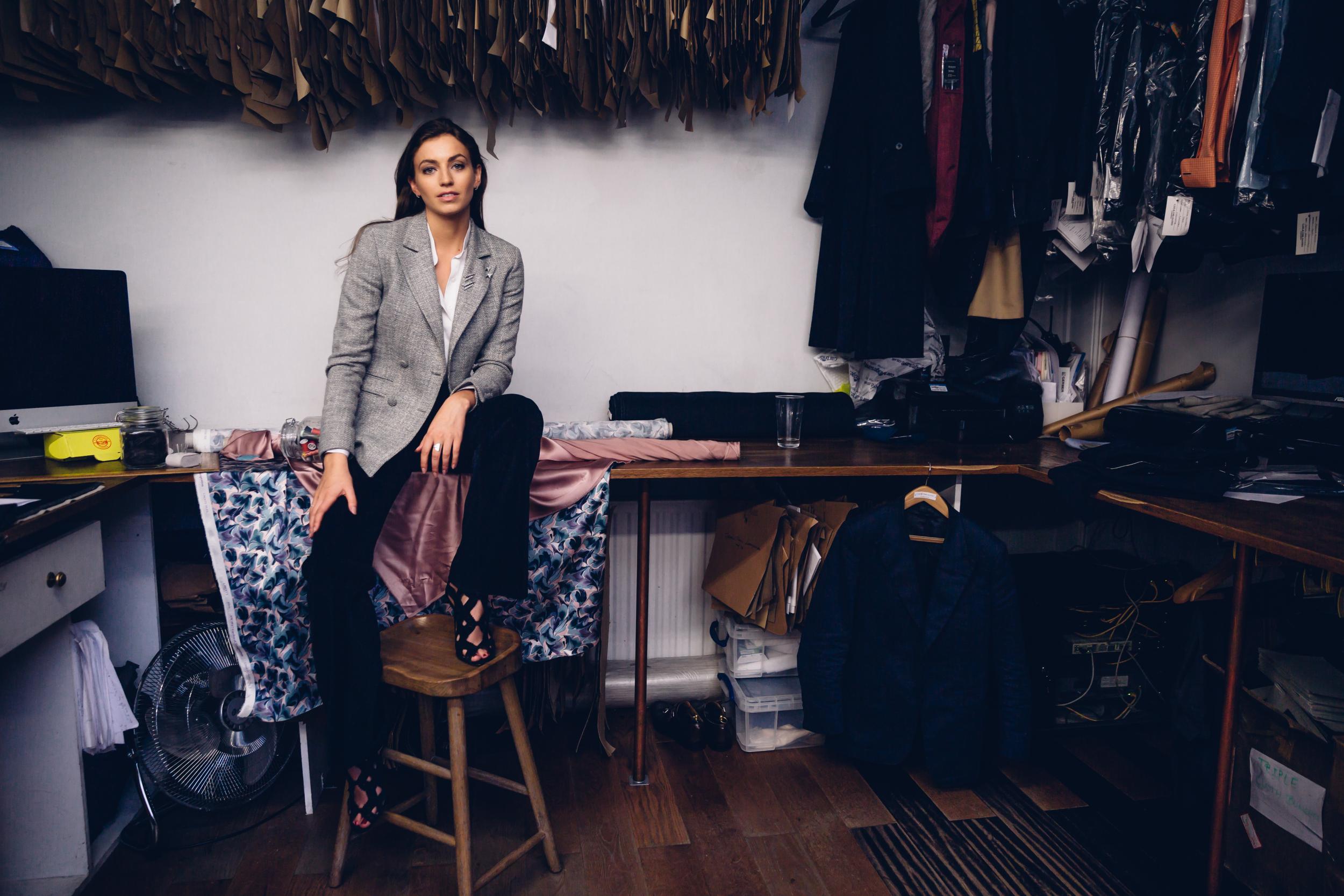
Half-way through her undergraduate degree in costume design, Gormley decided that if she wanted to work in a womenswear tailoring business, she’d have to carve out the career for herself, becoming Savile Row's first women-only tailor.
From trousers breaks and lapel shapes to sleeve lengths and buttons, here’s Gormley’s go-to guide to finding out everything you need to know before buying a suit.
Always have a budget in mind
"Go to someone who knows what they’re talking about with a rough budget in mind. There are a lot of suit options on the high street and each one will have a different fit.
If you find yourself standing in a shop worried that nothing suits your body shape, keep search around until you find a brand that provides a suit that caters to your size.
As with any fashion piece, I would say buy less but buy better.
It is better to have a wardrobe of 20 lovely things that are well made and expensive but will last, rather than 100 items that are cheaply made and are in need of replacing every two years."
Avoid manmade fabrics
"If you're concerned of perspiration in a suit, say “no” to anything made from polyester, viscose, and acetate. These fabrics are essentially different types of plastic. People often wonder why they get sweaty in certain suits and, more often than not, it will be because they’re essentially wearing a plastic bag, made of these cheap fabrics.
Buy less but buy better
There’s a common misconception that wool is a hot fabric, which is wrong. Shepherds in the Arabian Desert wear light-weight wool because it’s a cooling fabric."
Invest in cashmere or mohair
"Mohair is a great fabric for women who travel a lot because you can fold it up in a suitcase and it won’t crease. Cashmere and silk are also beautiful and easy fabrics to work with.
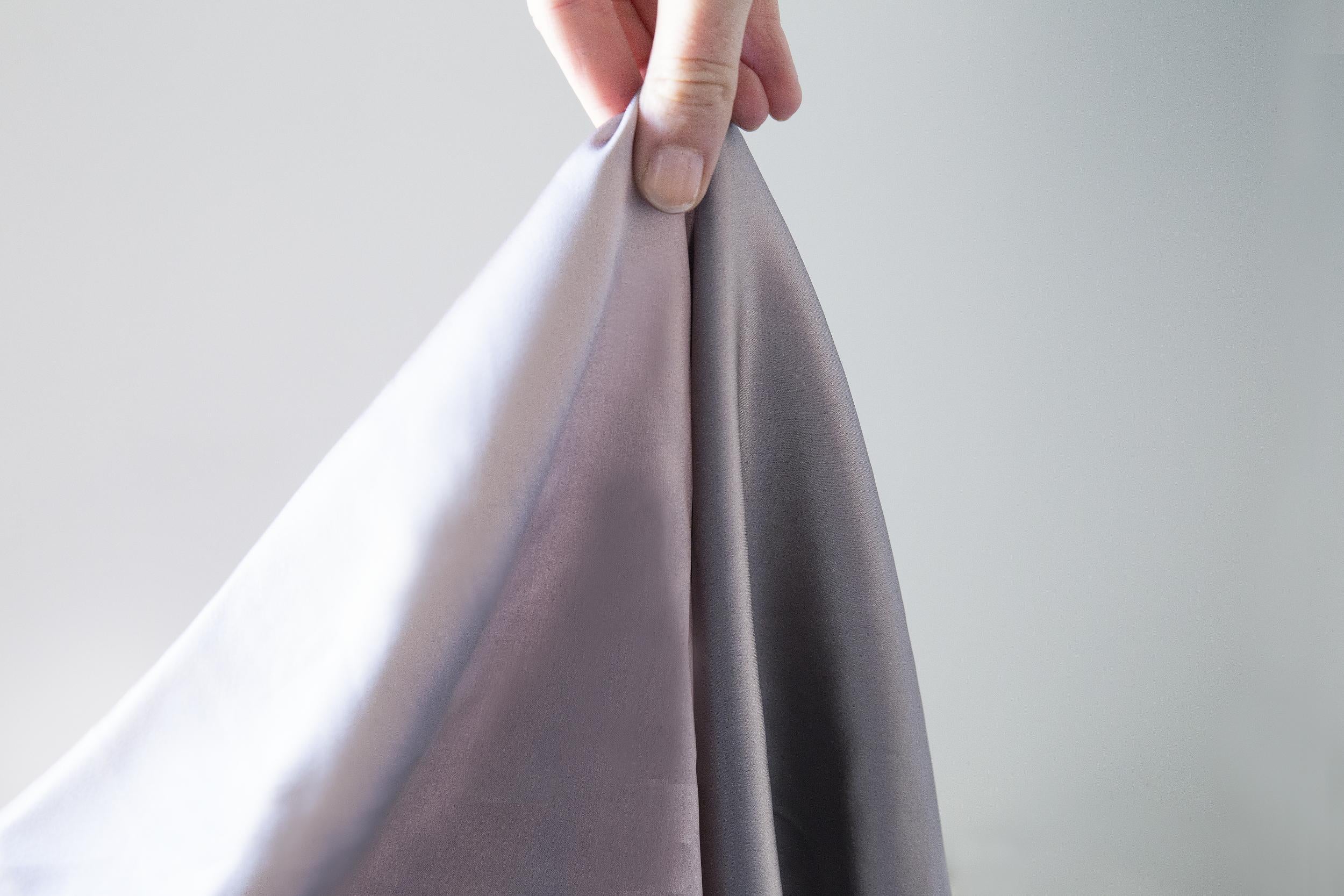
It’s worth looking just as much at the external fabric as the internal fabric of a suit. For example, you might come across a wool suit but find it has a triacetate lining. Be vigilant to consider all the fabrics that make up a suit.
The more you spend doesn’t mean you’ll find a high quality product. I’ve had several women come to me with £3,000 jackets asking why they’re ruined after a few wears. I have to point out that they’ve often bought a polyester jacket and ironed it too much, hence why the plastic is flaking out of the jacket.
When shopping for a jacket, look at the finish and ask yourself 'are the buttons on the sleeve stitched on, or can you undo them? Are the pockets closed or can you open them? What’s the trouser lining like? Is it a tack at the bottom?'
These questions will help indicate how much money and time has been invested into making a quality suit by the brand."
Don’t automatically buy a black suit
"I find that 90 per cent of people look good in navy and only 10 per cent look good in black, but people always buy black.
Black is an easier colour to choose because it’s easier to match black shoes to a black suit. However, people shouldn’t think of suits as head-to-toe one colour or fabric.
Mix up textures to make a look more versatile, depending on the occasion, whether that be with a millennial pink two-piece or an emerald green hued ensemble."
Think of a suit as two separate garments
"When people think of a suit, they often see it as two pieces to wear together. However, I would encourage people to think of them more as two separate entities that can be paired together and with other pieces in their wardrobe.
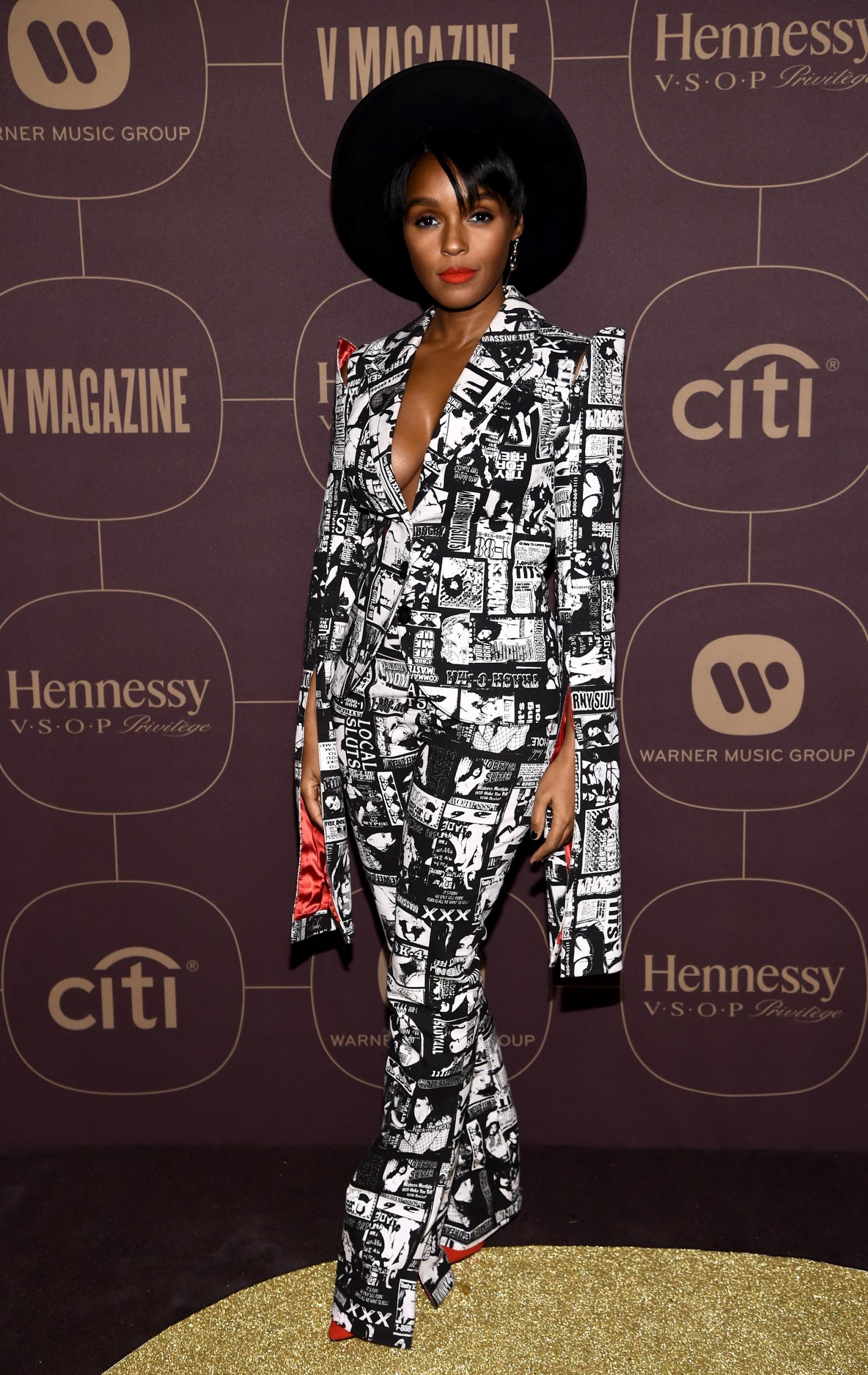
When buying a suit jacket, I recommend going for as much texture as possible. For example, it could be dappled with lots of other colours, like a soft blue with hints of pale grey or navy.
Say 'no' to anything made from polyester, viscose, and acetate
A textured jacket with various accents of colour will always go well with other pieces in your wardrobe. Meanwhile, if you buy a plain navy suit jacket and think it’ll match with all your navy dresses, I can assure you that it won’t."
Choose grey
"When it comes to shopping for a coloured suit, what you choose to buy will completely depend on your personality, budget, and confidence.
Often I find that women who are more self-conscious tend to like the same dark colours and those who are less fashion-forward often choose black, even though it might not look good on them.
While you should always go for a suit colour you feel comfortable in, don’t be afraid to experiment. The perfect colour? Pale grey.
Pale grey is incredibly transferable and can be worn with pink, navy, black, and white.
My top tip is to buy a pale grey suit with a lot of texture that can be dressed up and down, whether it’s with a dress or a pair of jeans."
Always test a suit before buying
"If you’re buying a suit in a high street store, come out of the dressing room and walk around a bit. Notice how the jacket falls, how it fastens, whether it’s constrictive when you bend your arms.
If you’ve purchased a suit online, wear it to walk around the house or while watching a film on the sofa. It’s hard to tell if a suit is comfortable and fits well if you’re standing up straight in front of a changing room mirror and sucking your tummy in."
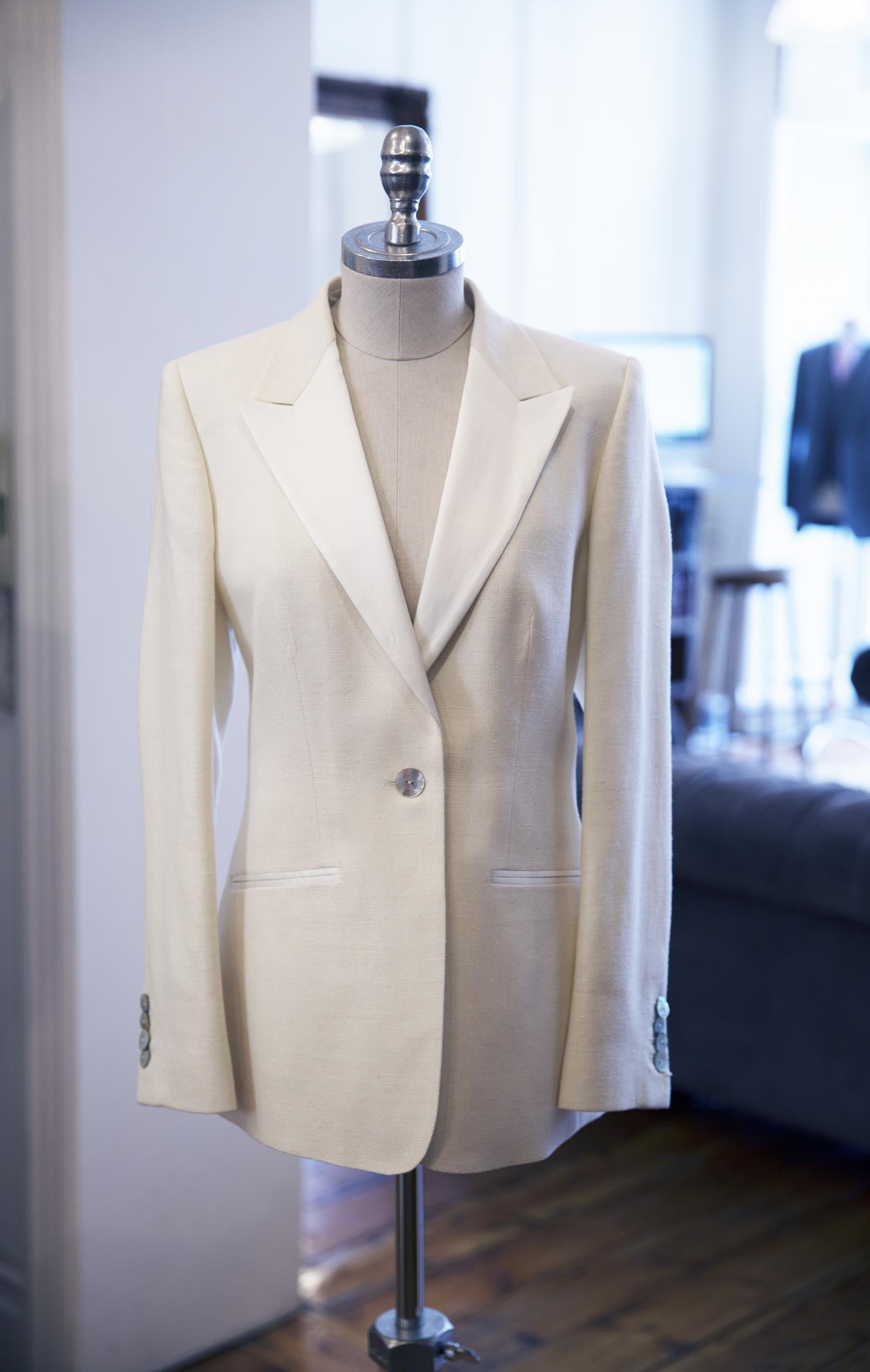
Choose a shawl collar
"Where a lapel sits on a client’s chest will depend on the designer’s preference. In recent seasons, several luxury brands such as Gucci, Balenciaga and Givenchy have showed a Seventies influence with drop lapels.
It’s also often said that big lapels make the chest look wider. While that might be the word of Saville Row, I don’t quite agree.
90 per cent of people look good in navy and only 10 per cent look good in black
In my opinion, women should choose a shawl collar (often referred to as a “shawl lapel” or “roll collar”) which is a U-shape collar that isn’t separated from the lapel.
It’s unusual, feminine, and sits well with the curves of a woman’s body. It makes a suit look less corporate and more suitable for evening functions."
The number of buttons changes your silhouette
"The majority of women will choose a suit jacket with one button.
However, many tall women opt for two buttons so their silhouette is more balance, while women who have a larger shape often prefer to have three so that the jacket closes over the chest instead of it being open, as it does with one or two.
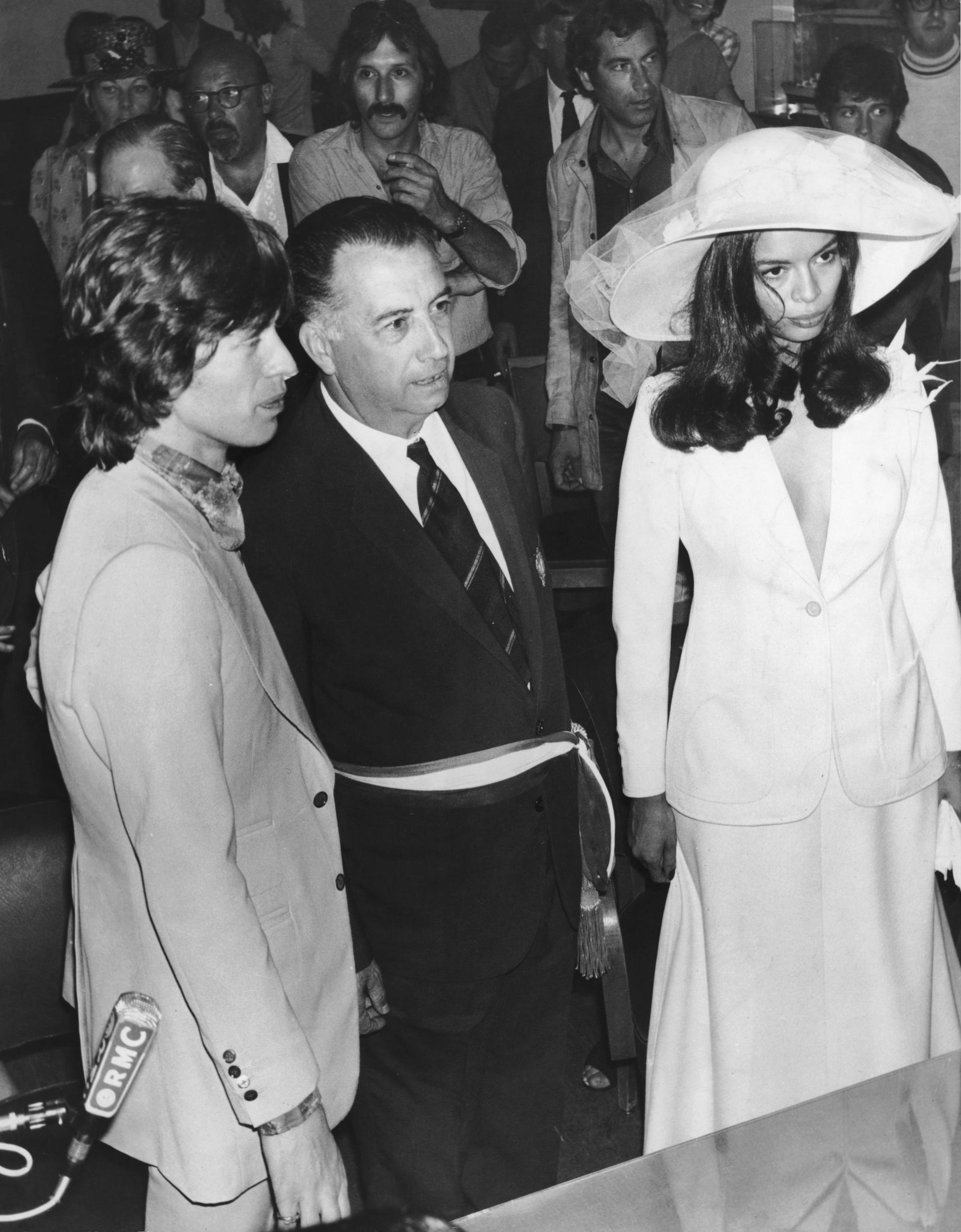
While double-breasted (a jacket showing two rows of buttons when fastened) is a fun throwback to the styles of the early 1900s, you have to be quite tall to pull it off. Consider how the number of buttons on a suit jacket changes your silhouette."
The sleeve should extenuate the wrist
"As womenswear doesn’t have the short, regular and long jacket styles that menswear designs provide, women often get lumbered with the standard sleeve lengths on offer.
There are a lot of rules that tailors follow when it comes to sleeve length, with the majority suggesting that the end of the sleeve should sit an inch from the bottom of the thumb. However, I find that is a bit too long for women’s suits.
I like to see the slenderness of a woman’s wrist and, if you’re wearing a beautiful bracelet or a watch, the aforementioned rule often doesn’t give you enough space to show those accessories off.
My tip? Hold out your left hand. Notice the bone that is furthest away from you (the metacarpal bone) which sits in line with your little finger. The sleeve should finish a half inch below the bottom of that bone."
Never try on a suit on its own
"The length of a suit jacket is really important.
As a result, I advise bringing a few of your favourite wardrobe items you hope to wear with a suit jacket and trying them on with it in the changing room. The length of the jacket you want will depend on what you’re pairing it with.
For example, if you’re someone who wears summer dresses all the time, you’re going to want a jacket that’s cut a bit shorter than your usual jacket-trouser combination – a long jacket over a long dress is a strict “no no”.
Likewise, if you opt for a cropped jacket, you might find there’s a big gap from where the jacket length ends and the trouser belt begins.
In addition to clothing, think what shoes you’re going to wear with the suit.
In my opinion, there’s nothing more flattering than a boot cut trouser but you have to be dedicated to wearig the style with heels. A skinny leg looks good with flat shoes, but a boot cut with flats can be quite shortening."
If in doubt, buy big
"Often a person’s waist height – the narrowest part of their body - will be different from where the button sits in suits on sale in high street shops. This makes sense as everyone’s torso length and height ratio varies.
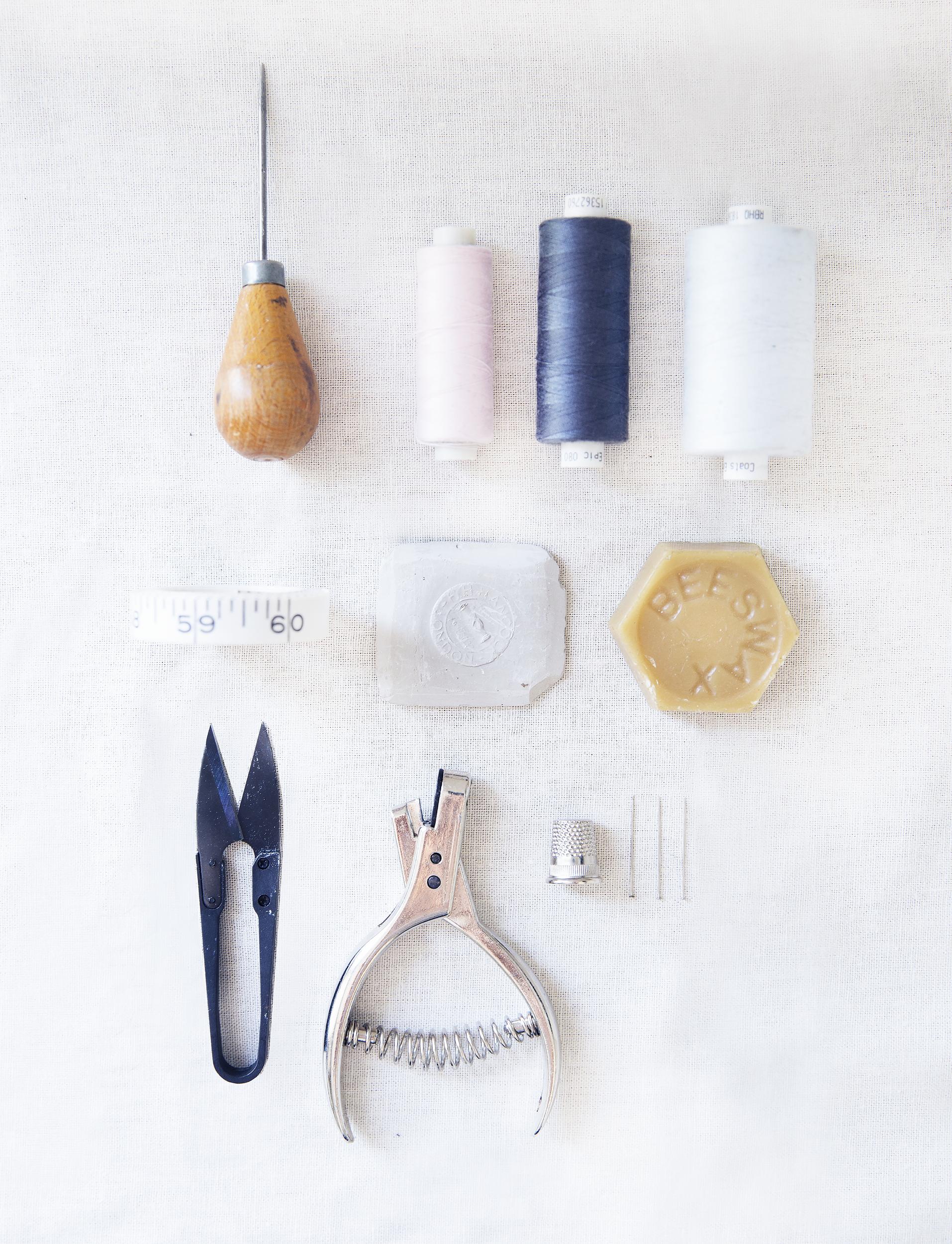
However, if you’re between two sizes at a high street shop, opt for one size up and have the garment taken in. If you need it adjusting in future, it can be taken in or out.
If you tell me it’s not worth investing £20 to have a suit taken in, you probably shouldn’t buy it as you clearly don’t like it enough."
Avoid trouser breaks
"The trouser break, as it is known in tailoring, is where the hem hits your foot – the clean line from thigh to shoe. A trouser without a break will hang clean, like a skinny jean.
Opt for one size up and have the garment taken in
Generally, I wouldn’t advise having a break. Instead, I would opt for a show that is 7/8 (between ¾ and full length) so you can easily wear stilettos and flats. Trousers that are too long and worn with trainers looks accidental but when they’re 7/8 with trainers, they’re perfect."
Experiment with linings
"In my opinion, a suit jacket that hasn’t got a lining is cheap, unless it's deliberately deconstructed for an avant-garde design.
If you’re buying a jacket, choosing one with a colourful or patterned lining is a great way to introduce a bit of personality.
I have several clients who work in corporate environments and often have to wear grey, blue and black. However, we make sure they can introduce a pop of colour on the inside, if they want to inject a bit more "life" in the ensemble."
Dry clean the jacket and trousers at the same time
"If you’re going to dry clean a suit, take it to a good dry cleaner.
Hovever, if you’ve worn the jacket and not the trousers, or vice versa, make sure to take both of them together to get cleaned.
Some chemicals in dry cleaning can change the colours in the wool of a suit, so the last thing you want is for your one of your pieces to start changing colour from its accompanying garment. It can be annoying to spend the money on having both cleaned, but it’s worth it.
When it comes to travelling, immediately hang up your suit in the bathroom. When you’re showering, the steam in the room will naturally take out some of the creases the suit may have acquired on transit. If that’s not an option, steaming gently from an iron will do the job. Hold the iron at least 10cm away and aim the steam in the direction of the suit.
As for packing your suit, make sure to put place it as the last item in your suitcase. Ideally, pop it in a high quality hanging bag and carry it with you."

Join our commenting forum
Join thought-provoking conversations, follow other Independent readers and see their replies
Comments